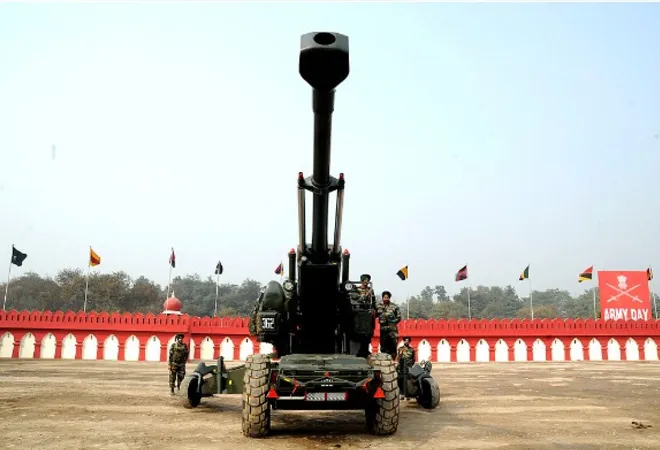
Defence Procurement Procedure - 2016 (DPP-2016) introduced many significant policy changes pertaining to India’s defence acquisition. But the most significant reform measure of DPP-2016 lies in its chapter on strategic partnership, the importance of which can be gauged by the fact that it’s the only chapter with a preamble to itself. The preamble acknowledges the absence of a level playing field between India’s private sector defence companies and the state owned defence public sector enterprises. It also acknowledges the need to create an environment conducive for the private sector to make long-term investments in developing manufacturing infrastructure, an eco-system of suppliers, skilled manpower, and research & development capabilities. The Draft DPP-2020 has retained the chapter on strategic partnership as it is.
Defence procurement being a monopsony with the government being the sole buyer, building sophisticated defence production capabilities requires a partnership with that buyer. From that standpoint, a policy push to develop strategic partnerships between private defence manufacturing companies and the government, was much needed. However, with the government now increasing the FDI limit in defence to 74%, the strategic partnership model of acquisition in its current form is counter-productive.
At the time of notifying the DPP-2016, India’s FDI limit in defence under the automatic route was 49%. With 51% ownership in the hands of an Indian defence manufacturer, the government expected global defence companies to make investments and transfer high-end technology to their Indian partnering entities. Given the high investments poured into their research and development, and the huge entry barriers into this industry, it does not make any commercial sense for global weapon manufacturers to part with their proprietary technology while not owning the majority stake. Hence for most segments of defence manufacturing, 49% cap on FDI ended-up being a non-starter in promoting indigenous defence manufacturing.
Between April 2000 and December 2019, India incrementally increased its FDI limits, but received only US$ 8.82 million in FDI into its defence sector. In 2016-17, immediately after FDI in defence was increased to 49%, India failed to attract any investment. In 2017-18, India received US$ 0.01 million, and in 2018-19, India received US$ 2.18 million in FDI. In any case these numbers don’t justify the enormous potential for foreign investments into India’s defence sector.
Viewed from this vantage point, policy provisions around the strategic partnership category of acquisition provides foreign defence manufacturers (OEM) something that an FDI under normal circumstances doesn’t provide – a commitment to buy from the government, before making any investment. In the recently announced selection of strategic partners for developing six submarines as part of the Project-75-India program, L&T and state-owned MDL have been selected to build six submarines worth INR 50,000 crore. L&T and MDL need to form a joint-venture (JV) with one of the five foreign OEMs that have been shortlisted (ThyssenKrupp Marine Systems – Germany, Navantia – Spain, Naval Group – France, Rubin Design Bureau – Russia, and Daewoo Shipbuilding and Marine Engineering – South Korea). Upon selection, one of the joint venture firms will receive the order, or it could be split between the two JVs formed by L&T and MDL. As per the extant provisions of the chapter on strategic partnership, such a procedure would be followed for acquisitions covering three other segments: fighter aircrafts, helicopters, armoured vehicles/battle tanks. While this model may be successful in inviting foreign OEMs to enter into JVs with Indian defence companies for a share in India’s defence orders, this isn’t enough to make India a defence manufacturing hub.
In order to become a defence manufacturing hub, India needs the financial investment, technology transfer and long-term operational involvement of foreign defence OEMs. These defence OEMs must feel assured that upon investing, they stand a chance to be contracted by the government for manufacturing and supply of high-end defence equipment involving critical technologies. Inconsistency between the new FDI rules that allows for 74% foreign investment and the strategic partnership program that limits foreign investments to 49%, does not provide this assurance. For example, let’s assume Boeing decides to enter into a JV with the Tata group, to manufacture attack helicopters in India, with Boeing owning 74% of the JV entity. Subsequently, if the government decides to acquire hundred attack helicopters using the strategic partnership route, the JV entity between Boeing and Tata would be ineligible to bid. The extant policy provisions on strategic partnership therefore disincentivises the global defence majors from making investments in response to the recently announced FDI rules.
In light of the new FDI rules, the strategic partnership route is not in the best interest of the defence ministry or the armed forces either. When acquisition happens under one of the other acquisition categories listed in DPP-2020, the interested bidders, which could include a 74-26 JV between a foreign and Indian defence manufacturing company, compete based on capabilities that have already been developed and are ready to be tested. But acquisition under the strategic partnership category involves commitment to acquisition of defence equipment that are yet to be developed and tested. This not only introduces an element of uncertainty, but also increases delivery time and cost.
For strategic partnership program of defence acquisition to yield the desired outcomes, it must have higher FDI limits than what is allowed normally under the automatic route. When FDI limit under the strategic partnership is lesser than what is permitted under the normal route, it not only promotes an inefficient acquisition model but also weakens the possibility of attracting higher FDI through the normal route. Therefore, acquisition under the strategic program must be resorted to only when acquisition under other categories (except buy global) are not possible. Under such circumstances, the government must allow for foreign investment exceeding 74% into the joint venture entity with which the it intends to enter into a strategic partnership. With lesser foreign investment (49%) than what is allowed under the normal route (74%), the strategic partnership program is entirely counter-productive in its current form.
The views expressed above belong to the author(s). ORF research and analyses now available on Telegram! Click here to access our curated content — blogs, longforms and interviews.




 PREV
PREV


